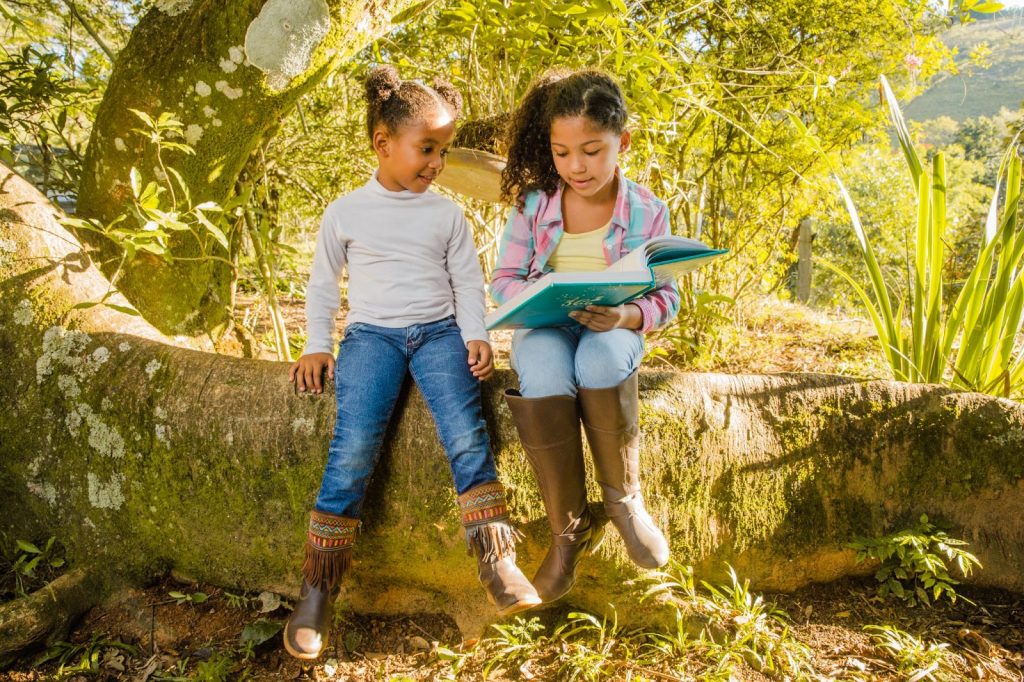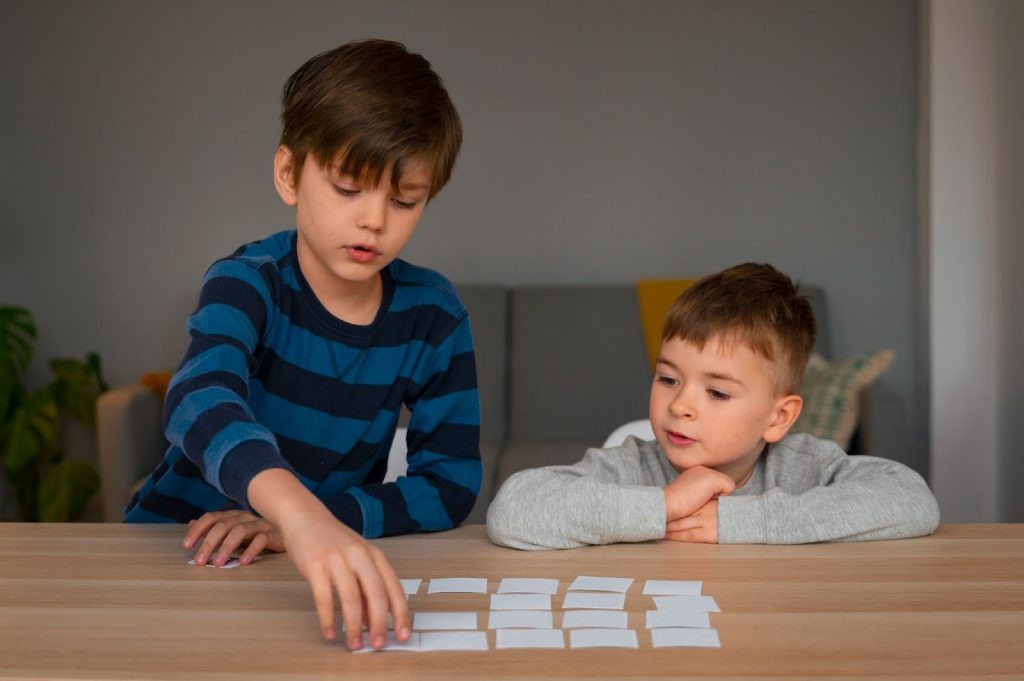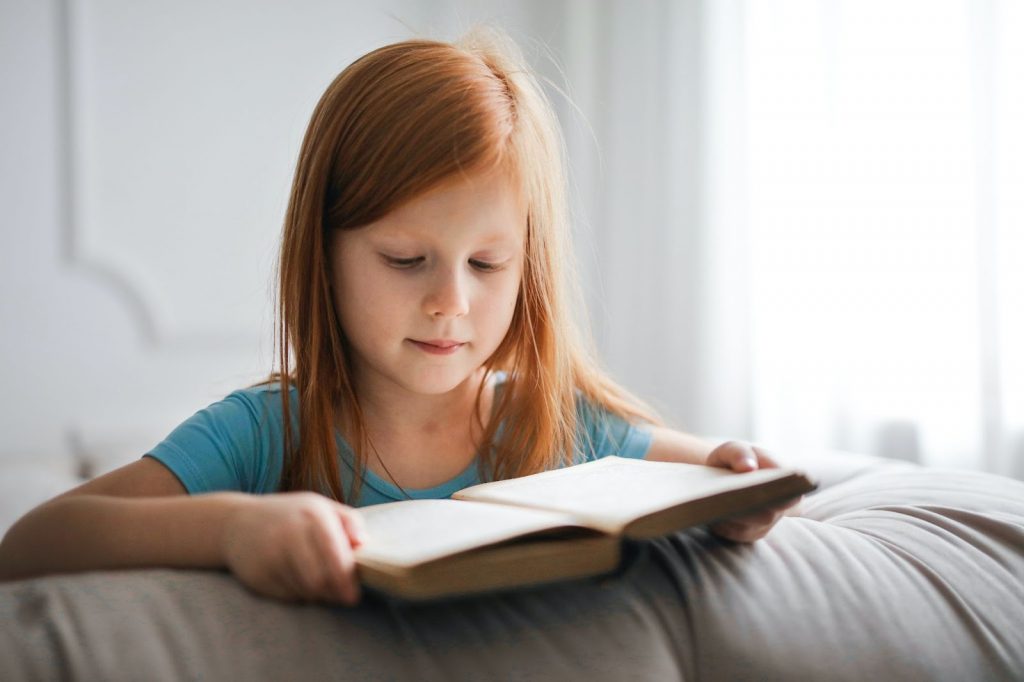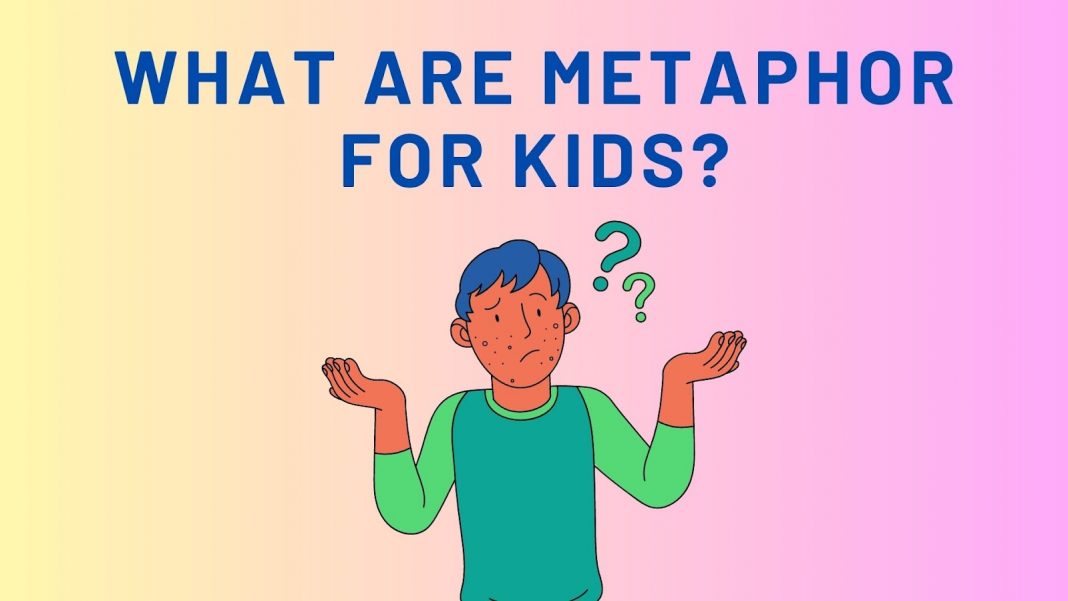Do you ever marvel at how kids view the world through their imaginative eyes? It’s truly magical to see them turn everyday things into extraordinary tales! But here’s the exciting part – you can nurture these creativity and language skills in your little ones with a simple yet powerful tool: metaphors for kids!
Math & ELA | PreK To Grade 5
Kids see fun.
You see real learning outcomes.
Watch your kids fall in love with math & reading through our scientifically designed curriculum.
Parents, try for free Teachers, use for free
So, what exactly is the metaphor definition for kids? Well, consider it a special way to describe something by comparing it to something else. For example, saying, “The world is a colorful rainbow,” helps kids see the world in a different light, full of vibrant colors and possibilities.
Metaphors make language fun and captivating for children. They let kids paint pictures with words and create fantastic stories that come alive in their minds. Plus, using metaphors can improve their communication skills, making them more confident speakers and writers.
Throughout this guide, we’ll provide you with simple examples of metaphors that are perfect for kids. We’ll also explore the difference between metaphors and similes, another fun language tool your child can learn. But that’s not all! Reading is a fantastic way to introduce metaphors to your child. We’ll show you how to find metaphors in children’s books and use storytelling to spark their imagination. Let’s dive in!
“Metaphors have a way of holding the most truth in the least space.” – Orson Scott Card
What is a Metaphor for Kids?
A metaphor for kids is an excellent way to talk about things using playful comparisons. It’s like saying one thing is another to make it more interesting. For example, if we say, “Her smile is a ray of sunshine,” it means her smile is super bright and makes us feel happy.
Metaphors make language fun and creative for kids. They help them express feelings and ideas in a more exciting way. Imagine describing the rain as “teardrops from the sky” or the stars as “twinkling diamonds.” It makes the World sound like a magical place! These metaphors are like little puzzles for your child’s brain. They get to solve the riddle and discover the hidden meaning behind the words. It’s like a secret code that makes talking and reading more enjoyable.
Using metaphors can also make your child a better communicator. It helps them think outside the box and explain things in different ways. When they use metaphors, they become more confident speakers and writers. So, when you see your child using metaphors, encourage them! It shows they are getting creative with their words and exploring their imagination. You can make up metaphors together. It’s a fun way to bond and have some laughs.
Understanding Metaphors and Similes
Metaphors: Metaphors are like delightful word puzzles for kids! A simple metaphor definition would be: Metaphors for kids are a special way of describing something by saying it’s something else. It’s like comparing two things to create a more exciting and imaginative description. For example, when we say, “Her laughter is music to my ears,” we mean that her laughter sounds as sweet and joyful as beautiful music.
“Metaphors are the powerful weapons in which everyone in the world is unconsciously a soldier.” – H.G. Wells”
Similies: Think of similes as the friendly cousins of metaphors! They also make comparisons but use the words “like” or “as” to do it. For instance, “His smile is as bright as the sun” compares his smile to the shining sun in the sky.
The Difference between Metaphors and Similes
| Aspect | Metaphors | Similes |
|---|---|---|
| Comparison | Directly say something is something else | Use “like” or “as” to compare two things |
| Example | “The world’s a stage.” | “She runs like a cheetah.” |
| Purpose | Add vividness and imagination to language | Create lively and playful comparisons |
| How to Spot | No “like” or “as” | “Like” or “as” is used in the comparison sentence |
How Can Kids Tell Them Apart?
To help your child understand, you can explain it like this: Metaphors directly say something is something else without using “like” or “as.” Similes use “like” or “as” to show the similarity between two things.
Practicing with Examples:
Let’s try a few metaphor examples for kids together:
Metaphor: “The world is a playground.” (The world is compared to a playground.)
Simile: “Her voice is like a gentle breeze.” (Her voice is compared to a gentle breeze.)
Why Are They Fun to Use?
Metaphors and similes make the language more colorful and captivating. They allow your child to paint pictures with words and make their descriptions come alive. Plus, it helps them think in creative and imaginative ways!
Understanding metaphors and similes will make your child a language magician, casting spells of creativity with their words! The following section explores why metaphors are important and how they can benefit your child’s development. Let’s keep the wordplay going strong!
5 Examples of Metaphors for Kids
While metaphors may be complicated for younger kids, they can learn intuitively through examples and meanings. They can better grasp the concept through easy metaphor examples for students that are designed to invoke visual memory recognition.
1. “It’s raining cats and dogs.”
The metaphor “It’s raining cats and dogs!” means that it’s raining very heavily outside. It’s not raining animals, but the phrase describes heavy and intense rainfall.
2. “Your mind is a garden.”
The metaphor “Your mind is a garden” means that your thoughts and emotions are like plants in a garden. Just as you can plant and grow beautiful flowers or useful vegetables in a garden, you can cultivate positive and constructive thoughts in your mind. Similarly, if you neglect the garden and let weeds grow, your mind can become filled with negative or unhelpful thoughts.
3. “Life is a rollercoaster”
The metaphor “Life is a rollercoaster” means that life is full of ups and downs, just like a thrilling ride on a rollercoaster. It suggests that life can be unpredictable, with moments of excitement, happiness, challenges, and difficulties. Like on a rollercoaster, we may experience both thrilling and scary lows, but holding on and enjoying the ride is essential!
4. “He’s a shining star.”
The metaphor “he’s a shining star” means that the person being referred to is incredibly talented, brilliant, or accomplished, just like a bright and radiant star in the sky. It highlights their exceptional qualities and success, comparing them to the brilliance and uniqueness of a star.
5. “A heart of gold and a heart of stone”
Imagine that hearts are like unique treasures. They can’t be made of gold or stone, but we use these materials as symbols to compare how people treat others. When we say someone has a “heart of gold,” they are kind, compassionate, and generous. On the other hand, a “heart of stone” represents coldness and a lack of empathy.
Metaphors make everyday ideas come alive by using fun and creative comparisons. They add vibrant colors, excitement and make words easier to remember. So, get your kids to play around with metaphors and enjoy the beauty of expressive language! Using metaphors, they can boost their creativity, communication skills, and grasp of the World.
7 Reasons Why Using Metaphors is Important
Metaphors are magical tools that add excitement to your child’s language skills! As highlighted by Gibbs, they are not just ornamental aspects of language but fundamental schemes by which kids conceptualize the world and their activities. They enable children to express themselves in unique and imaginative ways, making communication fun and engaging. So, let’s explore why metaphors are essential for your child’s development and how they can create a captivating world of words!”
1. Making Language Fun and Engaging
Metaphors add a sprinkle of excitement to your child’s words! They turn ordinary sentences into captivating adventures. When kids use metaphors, it’s like they’re painting colorful pictures with their imagination. It keeps conversations and stories full of surprises.
2. Expressing Feelings and Ideas
Metaphors let your child express themselves in unique ways. They can describe emotions and experiences with creativity. For instance, saying, “My heart is a balloon, floating with happiness,” shows how joyful they feel.
3. Building Communication Skills
When kids use metaphors, it shows they understand words deeply. Explaining things in different and imaginative ways helps them become better communicators. It also makes their stories more enjoyable to listen to.
4. Developing Imagination and Creativity
Encouraging metaphors nurtures your child’s creativity! It unlocks a door to endless possibilities in their minds. They can turn a simple tree into a wise old storyteller or a rainy day into a magical adventure.
5. Connecting with the World
Metaphors make the World more relatable for kids. To understand complex ideas, they can compare nature, animals, or everyday objects. It’s like a secret code that helps them understand and relate to the World around them.
6. Encouraging Positive Thinking
Metaphors inspire positivity and optimism! When kids use uplifting comparisons, it boosts their confidence and self-esteem. For example, saying, “I’m a brave explorer,” can help them tackle challenges with courage.
7. Boosting Reading and Writing Skills
As your child encounters metaphors in books, their reading skills improve. It sparks curiosity and keeps them engaged in stories. When they write, using metaphors adds sparkle and charm to their tales.
Related Reading: Best Reading Strategies for Students
4 Types of Metaphors for Kids
One of the best ways to talk about metaphors for kids is to explain the different types of metaphors. This will help your children use them in their daily vocabulary and incorporate them into their homework.
1. Dead Metaphors
Dead metaphors are like old friends in our language. They were once fresh and creative comparisons, but now they are so commonly used that we must consider their original meaning. It’s like they’ve become regular words. For example, sayings like “the heart of the matter” or “the clock is ticking” are dead metaphors. We use them without realizing that they once compared a heart to the core of an issue or a clock’s ticking to the passage of time. Although they may be overused, dead metaphors add a touch of familiarity to our conversations.
2. Extended Metaphors
Extended metaphors are like enchanting journeys that last longer than other types of metaphors. They explore one main comparison through a whole story, poem, or speech. For example, a story comparing a journey through life to sailing on a boat. In this metaphor, every aspect of sailing – the wind, the waves, the destination – can represent different stages and experiences in life. Extended metaphors allow for a deeper exploration of ideas and emotions.
3. Implied Metaphors
Implied metaphors don’t directly say that one thing is another, but the comparison is suggested. It’s like a gentle hint that makes you think about the similarities. For example, saying, “She danced through the room on tiptoes,” implies that she moved gracefully like a ballerina. The direct comparison to a ballerina is not made, but it’s suggested through the description of how she danced. Implied metaphors are like little puzzles for our minds to solve, adding intrigue to our language.
4. Mixed Metaphors
Mixed metaphors are like playful combinations of comparisons. They are created when two metaphors are combined, even if they fit perfectly. The result is often a humorous and sometimes nonsensical effect. For example, saying “The early bird catches the worm, but the second mouse gets the cheese” combines two sayings: “The early bird catches the worm” and “The second mouse gets the cheese.” The result is a fun twist that might make you smile. Mixed metaphors show the creative side of language and can lead to some entertaining expressions.
Remember, these metaphors add flair and depth to your child’s writing and storytelling. Encourage them to explore each type, experiment with different metaphors, and have fun crafting their magical linguistic masterpieces!
6 Tips for Writing Metaphors

Creating metaphors is a delightful adventure that sparks your child’s creativity. You can join the fun and guide your little one in crafting magical comparisons. Here are some simple tips to spark their language and imagination soar.
1. Keep it Simple and Relatable
Encourage your child to start with familiar things. Use everyday objects, like animals, toys, or even favorite foods, as comparisons. For example, “His laughter is as loud as a roaring lion” or “Her smile is as sweet as a candy cane.”
2. Explore Feelings and Emotions
Metaphors are perfect for expressing feelings! Ask your child to think about their feelings and compare them to something else. For example, “My happiness is a sunny day” or “My sadness is a rainy cloud.”
3. Use Your Senses
Metaphors come alive when they involve our senses. Ask your child to think about what something looks, feels, smells, sounds, or tastes like. Then, compare it to something exciting! For example, “Her touch is as gentle as a butterfly’s wings.”
4. Be Playful and Imaginative
Don’t be afraid to think outside the box! Encourage your child to come up with funny or fantastical metaphors. It’s like creating their own magical World of words. For example, “The trees are dancing giants” or “The moon is a glowing lantern in the sky.”
5. Try Metaphor Hunt
Go on a metaphor hunt with your child! Look for metaphors in books, poems, or even signs around you. It’s like a fun game of spotting hidden treasures in language.
6. Draw and Visualize

Let your child draw their metaphors! It helps them visualize the comparisons and adds a creative touch to their expressions. They can even create metaphor-inspired artwork.
Remember, writing metaphors is all about having fun with words! Embrace their creativity and celebrate their imaginative expressions. As parents, your encouragement and appreciation will make their metaphorical adventures even more magical.
7 Activities with Metaphors for Kids to Try at Home

Below are some simple and enjoyable home-based activities that ignite their creativity and make language play a delightful experience. Each activity is designed to spark their imagination, from metaphor treasure hunts to drawing challenges and metaphor charades. With storytelling, collages, and memory games, your child will have endless opportunities to craft their metaphors and see the World in a new light. Let’s embark on this metaphorical adventure together and let the language magic unfold!
1. Metaphor Treasure Hunt:
Go on a treasure hunt around the house and garden! Look for everyday objects and think of creative ways to describe them using metaphors. For example, “The fridge is a chilly igloo” or “The flowers are a rainbow of colors.”
2. Metaphor Drawing Challenge:
Get out the art supplies and let your child’s creativity flow! Have them draw or paint their favorite metaphors. It’s like turning words into colorful pictures. For example, “My dream is a soaring kite in the sky.”
3. Metaphor Scavenger Hunt in Books

Explore your child’s favorite books together. Look for metaphors hidden within the stories. It’s like going on a secret mission to spot these clever comparisons. When you find one, talk about how it adds magic to the story.
4. Metaphor Charades:
Play a game of metaphor charades! Take turns acting out different metaphors without speaking. It’s like a guessing game full of laughter. For example, pretend to be “a scared little mouse” or “a busy buzzing bee.”
Related Reading: Great Charades for Kids of All Ages
5. Metaphor Storytime:
During bedtime or playtime, makeup stories with lots of metaphors! Let your child’s imagination run wild as they create magical adventures using comparisons. It’s like weaving a tapestry of words. For example, “Once upon a time, the forest was a mysterious kingdom of talking trees.”
6. Metaphor Collage:
Collect pictures from magazines or print images from the internet. Help your child create a metaphor collage by matching pictures to creative comparisons. It’s like putting together a visual feast of imagination.
7. Metaphor Memory Game

Create memory cards with simple metaphors on one side and corresponding images on the other. Play a memory game with your child to match the metaphors to the pictures. It’s like exercising their brain and language skills while having fun.
These activities are all about enjoying language play with your child! Let their creativity bloom as they explore the wonderful world of metaphors. Your support and involvement will make these moments of bonding and learning even more special.
7 Ways How Reading Helps with Metaphors for Kids

Reading opens the door to captivating comparisons that bring stories to life. It’s like finding hidden treasures that spark engaging discussions about feelings, characters, and new words. Your child’s vocabulary and imagination will soar through storytelling and various metaphors in literature. Let books be the gateway to endless language exploration and creativity!
1. Exposing Kids to Metaphors in Literature
Reading opens the door to a world of metaphors! When your child reads books, they encounter beautiful comparisons that make stories come alive. It’s like finding hidden gems in the pages.
2. Engaging Discussions About Metaphors
As you read together, discuss the metaphors you find. It’s like having exciting conversations about the wonders of language. Ask questions like, “What does this metaphor mean?” or “How does it make the story more interesting?
3. Using Storytelling to Introduce Metaphors
Tell your child stories that are rich in metaphors. It’s like weaving a tapestry of words that captivate their imagination. Encourage them to come up with metaphors inspired by the stories.
4. Connecting Characters and Feelings
Metaphors help kids relate to characters and their emotions. It’s like a bridge that connects them to the story’s World. Ask your child, “How do you think the character feels when they say this metaphor?”
5. Expanding Vocabulary and Imagination
Metaphors introduce new words and ideas. It’s like planting seeds of creativity in your child’s mind. As they encounter more metaphors, their vocabulary and imagination bloom!
6. Discovering Different Types of Metaphors
In books, your child can encounter various types of metaphors, like nature metaphors, animal metaphors, or even fantastical ones. It’s like exploring a treasure trove of wordplay.
7. Making Reading an Adventure
With metaphors, reading becomes an adventure of its own. It’s like sailing on a sea of colorful expressions. Encourage your child to enjoy the journey of language exploration through books.
Grab your favorite books and embark on this magical reading journey with your child. Together, you’ll uncover the wonders of metaphors, and reading will become a joyous experience full of language wonders.
Conclusion
Reading is the key to unlocking the magic of metaphors for kids! Through books, children discover captivating comparisons that enrich their language and imagination. As research has shown, metaphors not only enhance children’s creative thinking but also improve their ability to understand complex concepts by relating them to familiar experiences. Sharing stories creates a joyful journey full of colorful wordplay. By exploring books together, parents can help their children discover a list of metaphors for kids that ignite creativity and language skills. So, let reading be the guide as they embark on an enchanting adventure of metaphors and creativity!
Frequently Asked Questions (FAQs)
What age suits introducing metaphors to kids?
Kids as young as 4 or 5 can start exploring simple metaphors with parental guidance. As they grow, they’ll grasp more complex comparisons.
Are similes the same as metaphors?
No, similes use “like” or “as” for comparisons, while metaphors directly say something is something else.
Are there any benefits of using metaphors in everyday conversations?
Yes, metaphors make language engaging, stimulate imagination, and improve communication skills in kids.
























